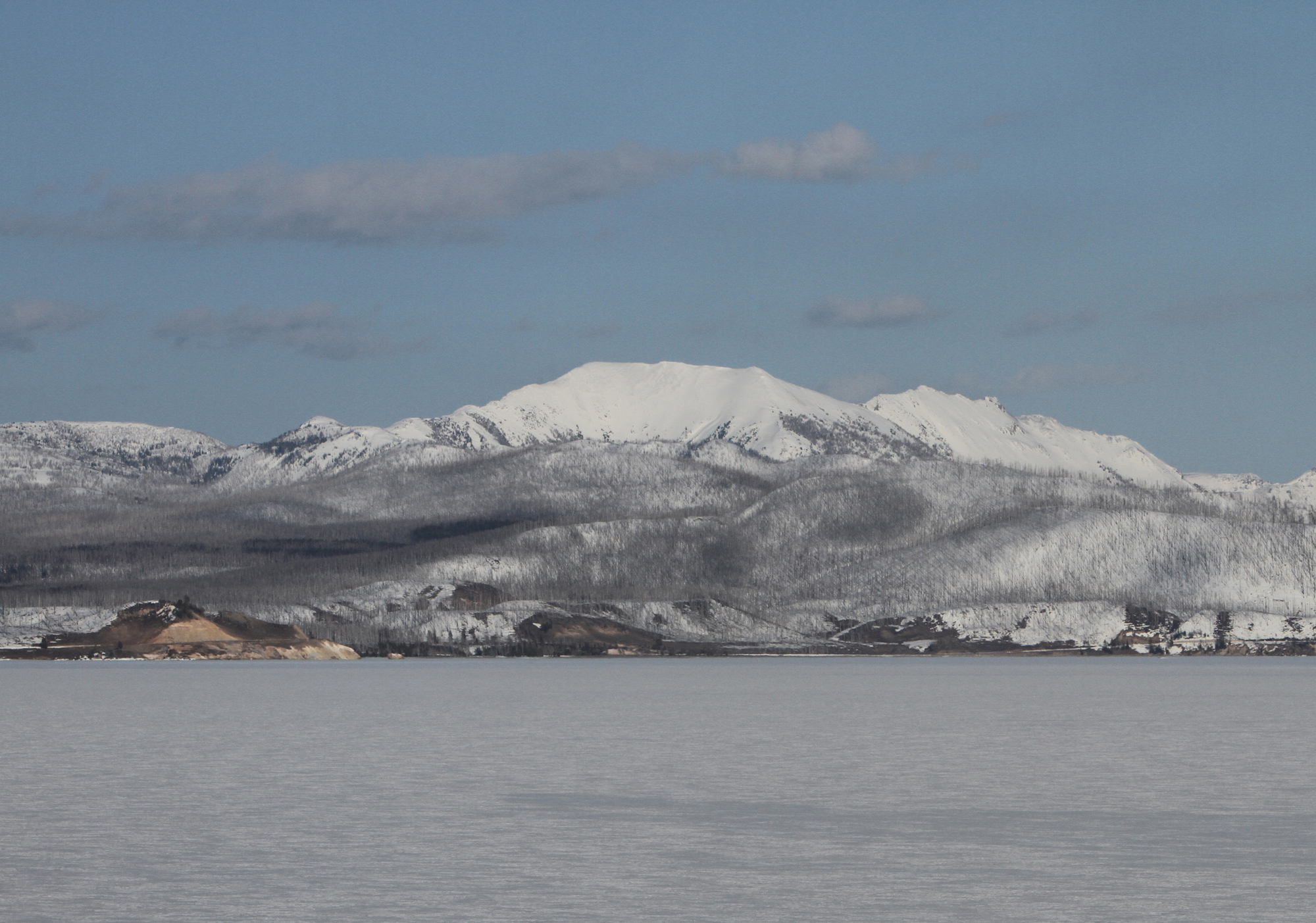This Lake Can Sing!
Air Date: Week of February 14, 2014

Yellowstone Lake half frozen over (photo: 21708aud, Flickr, Creative Commons 2.0)
For over a century, visitors have marveled at the unearthly sounds "like a vast pipe organ" near Yellowstone Lake as it freezes. Reporter Jennifer Jerrett has this audio postcard.
Transcript
CURWOOD: Well, we visit another national park now - the oldest, and among the most iconic - Yellowstone, established by President Ulysses S. Grant back in 1872. The park covers nearly 3,500 square miles, and contains one of the largest high altitude lakes in North America, Yellowstone Lake. It's that lake we're headed for, as it's been the scene of a mystery to visitors for over a century.
In the winter the lake sings, though exactly why is uncertain. Scientists think it's caused by the ice expanding as it freezes. Some say it sounds like a vast pipe organ or the humming of a swarm of bees or the ringing of telegraph wires. Reporter Jennifer Jerrett got the chance to visit the lake with a guide who knows the place well.
SEFTON: I’m Bruce Sefton; I’m with the Maintenance Division, National Park Service, here in the Lake District. This is my 26th winter; every day’s fun.

The singing lake of Yellowstone National Park (photo: Yellowstone NPS)
[WALKING ON SNOW]
We’re going to take you down to listen to the lake sing. Come on down!
[WALKING ON SNOW; SOUNDS OF LAKE RUMBLING, WIND]
Yeah, this doesn’t happen all the time; it’s fairly rare. So not many people hear this, ’cause if there’s even the tiniest bit of snow, the deal’s off, the sound’s all muffled.
[EERIE LAKE SOUNDS]
As this stuff freezes and tightens, there’s movement underneath, so this crackle starts and the crack just goes, takes off.

Yellowstone Lake in winter (photo: Kyle Bradley, Creative Commons 3.0)
[LOUD RUMBLING SOUNDS]
And you’ll hear this thing that’ll sound just like an F16 just coming right at you.
[CONTINUED RUMBLING]
When the sun comes up it begins in earnest, when the sun goes down, it peters out. The activity’ll subside and stop, and be quiet.
[SOUND CONTINUES]

Bruce Sefton at Yellowstone National Park (photo: Jenny Jerrett)
I’ve tried singing along but it just doesn’t work too well.
[SOUND CONTINUES]
CURWOOD: That's Yellowstone National Park worker, Bruce Sefton who took reporter Jennifer Jerrett to the park's singing lake.

Jenny Jerrett (photo: Neal Herbert)
[MORE EERIE SOUNDS]
Living on Earth wants to hear from you!
Living on Earth
62 Calef Highway, Suite 212
Lee, NH 03861
Telephone: 617-287-4121
E-mail: comments@loe.org
Newsletter [Click here]
Donate to Living on Earth!
Living on Earth is an independent media program and relies entirely on contributions from listeners and institutions supporting public service. Please donate now to preserve an independent environmental voice.
NewsletterLiving on Earth offers a weekly delivery of the show's rundown to your mailbox. Sign up for our newsletter today!
 Sailors For The Sea: Be the change you want to sea.
Sailors For The Sea: Be the change you want to sea.
 The Grantham Foundation for the Protection of the Environment: Committed to protecting and improving the health of the global environment.
The Grantham Foundation for the Protection of the Environment: Committed to protecting and improving the health of the global environment.
 Contribute to Living on Earth and receive, as our gift to you, an archival print of one of Mark Seth Lender's extraordinary wildlife photographs. Follow the link to see Mark's current collection of photographs.
Contribute to Living on Earth and receive, as our gift to you, an archival print of one of Mark Seth Lender's extraordinary wildlife photographs. Follow the link to see Mark's current collection of photographs.
 Buy a signed copy of Mark Seth Lender's book Smeagull the Seagull & support Living on Earth
Buy a signed copy of Mark Seth Lender's book Smeagull the Seagull & support Living on Earth

